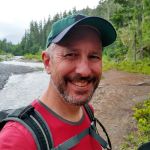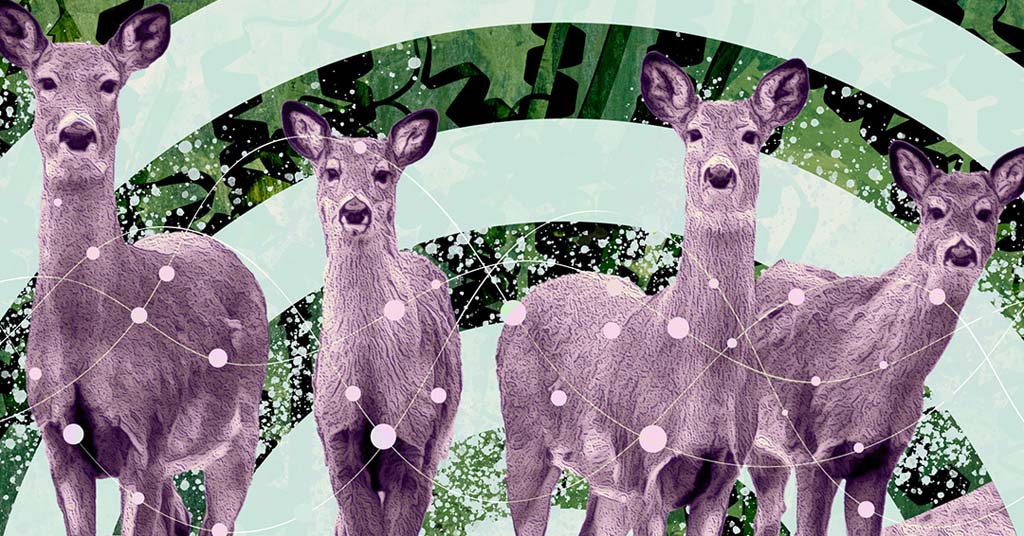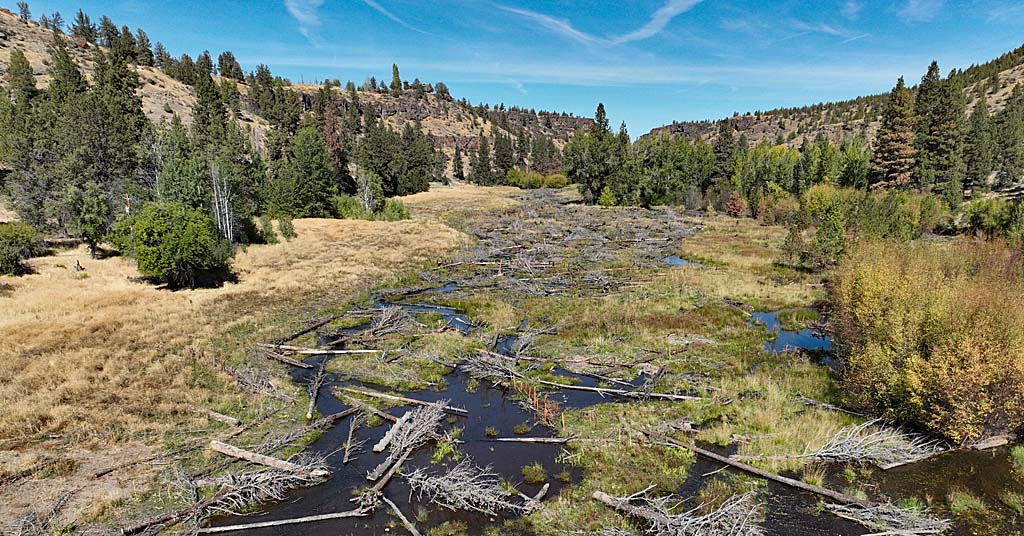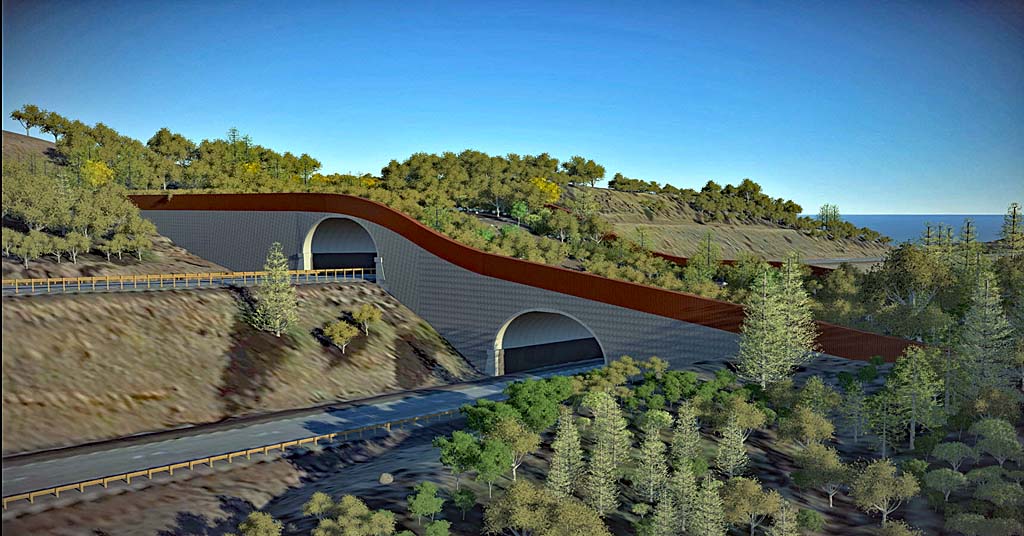Destructive impacts of wildland-urban interface stretch from native plants to wildlife to light pollution. Local governments often promote the problems

Whose home? In wildland-urban interface areas, threats depend on your point of view. Photo: NASHCO
By Andrew Engelson. October 28, 2021. Jay Kehne was on an elk-hunting trip in Utah several years ago when he got a call from his wife, who was in tears. She’d just hit a deer with her car.
“She was hysterical. She said, ‘I’ve just hit a deer, it’s under the car,’” says Kehne.
His wife had been driving to work in Oroville, Wash., when a fawn leapt into her path.
“She was distraught, as most people are when that happens,” says Kehne.
Such collisions have become common on a 12-mile stretch of U.S. Route 97 in the Okanogan Valley. The Washington State Department of Transportation estimates some 350 deer are hit on this stretch of highway each year—an average of nearly one per day—making it one of the most dangerous roads for wildlife strikes in the state.
Fateful encounters between wildlife and humans are on the rise across the Pacific Northwest, in part because of the rapid growth of wildland-urban interface (WUI)—areas in which people live in close proximity to wildlands.
Especially east of the Cascade crest, people are increasingly living near forests and recreating in them. That’s causing lots of problems, including human-wildlife conflicts, the proliferation of invasive plants and an increased incidence of severe wildfires.
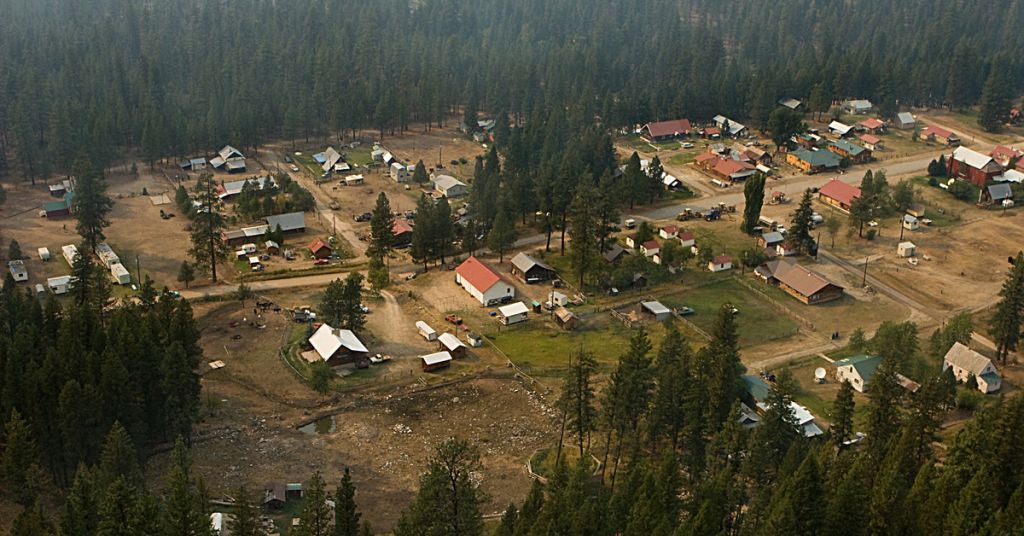
Housing bubble: Does this look like a national forest? Increasingly, yes, as residents of the Boise National Forest can attest. Photo: USFS
These issues are exacerbated by climate change. But even more so by local governments, which typically promote the spread of WUI out of economic self-interest.
In response, wildlife biologists, some government agencies and environmental organizations across the region are innovating solutions to reduce impacts.
They can barely keep up with a rapidly spreading crisis.
Disease, dogs, darkness
According to a 2018 study, land characterized as wildland-urban interface grew by 33% between 1990 and 2010, making it the fastest growing type of land use in the United States. David Peterson, a professor in the University of Washington’s School of Environmental and Forest Sciences, studies the impact of this rapid growth in populations living near wildlands.
“It’s extending like little fingers out into wildland areas,” says Peterson. “In the past there was more of a gradual transition from these small communities. Now there’s a much more visible movement of people living there both permanently and temporarily.”

In the zone: UW’s Peterson studies wildland-urban interface. Photo: David Peterson
The most prominent issue associated with WUI is increased risk of wildfire. Campfires, debris burning and other human activity are responsible for more than 80% of wildfires in the United States, says Peterson. In addition, the growing number of homes near forestlands prevent land managers from setting prescribed burns necessary to restore forest resiliency.
And health concerns over wildfire smoke prevent agencies from letting fires burn when they need to.
But the impacts aren’t limited to fire. Non-native invasive plant species such as blackberry, Scotch broom, knapweed and cheatgrass thrive in disturbed areas where people live.
“Especially on the east side [of the Cascades], those invasive annuals are more conducive to burning than the native vegetation,” says Peterson. “They tend to accelerate the fire cycle.”
Diseases that spread from animals to humans, such as Lyme disease, are a growing concern in areas where humans and deer are in closer proximity (the ticks that spread Lyme use deer as hosts).
Birds and wildlife are also under threat as wildland-urban interface intensifies.
It’s tempting to let your dog roam free outside a mountain cabin, but the results are often disastrous for native species. Studies show domestic dogs have a significant impact on wildlife, whether directly killing creatures, overstressing small animals by chasing them or spreading disease.
[perfectpullquote align=”full” bordertop=”false” cite=”” link=”” color=”” class=”” size=””]”Local governments privatize the benefits of WUI development and socialize the cost. That’s the crux of the problem.” —David Peterson[/perfectpullquote]
Light pollution is another concern: illuminated homes and streetlights in the wildland-urban interface can affect how wildlife function, especially those active at night and dawn and dusk.
A study published last year found that in the intermountain West, light pollution altered the predatory-prey dynamics between cougars and mule deer, making well-lit areas a much more successful and attractive place for cougars to hunt.
Exaggerating ‘problem’ wildlife
These shifting dynamics in animal behavior have led to one of the most striking impacts of the rapid growth in wildland-urban interface: conflicts between people and wildlife.
Though the vast majority of these encounters are benign for humans, viral videos exaggerate the risks and frequency, whether it’s hikers stalked by cougars or a teenager who pushed a bear off her backyard fence.
The dangers to people are exceedingly small. Most often, these encounters turn out badly for the animals.

Winter kills: Cougars killed by deputized posse members in Klickitat County, Wash.. Photo: Leininger/Klickitat County
“You’re much more likely to be struck by lightning than (be harmed by a wild animal),” says Brook Fahy, director of the Oregon-based nonprofit Predator Defense.
Despite the fact there have been only 27 fatal cougar attacks on humans in North America in the past 100 years, agencies such as the Klickitat County Sheriff Office have ordered the killing of 19 cougars over the past three years.
“These agencies want you to think the world is coming to an end, that cougars are at bus stops munching on children,” says Fahy. “But to think you’re never going to have any type of incident is ridiculous when you have people at unprecedented levels visiting these remote areas.”
Climate change is also driving more interactions.
A study published in the journal Science in July showed a correlation between rising global temperatures and increases in human-wildlife conflict.
The study’s author, Briana Abrahms, an assistant professor of biology at the University of Washington, found that a dramatic increase in humpback whale entanglements with fishing lines off the coast of California in 2015 was the result of rising ocean temperatures—which in turn changed whale feeding patterns and created a bloom of toxic algae that changed the timing of the Dungeness crab harvest, causing conflict.
Abrahms says recent studies show black bear encounters in urban areas increase as temperatures climb.
“In periods of drought when you have a decline in natural food sources for bears, they’re more likely to come into human-dominated areas,” says Abrahms. “As a result you might see more bears going through garbage or increasing property damage.”
Careless people kill bears
In Kelowna, B.C., interactions with black bears were at unprecedented levels over the summer, reports WildSafeBC, an organization committed to reducing bear-human conflict in the province.
The greater Kelowna area had a total of 319 problem black bear reports in August and September, nearly twice the average for that time of year.
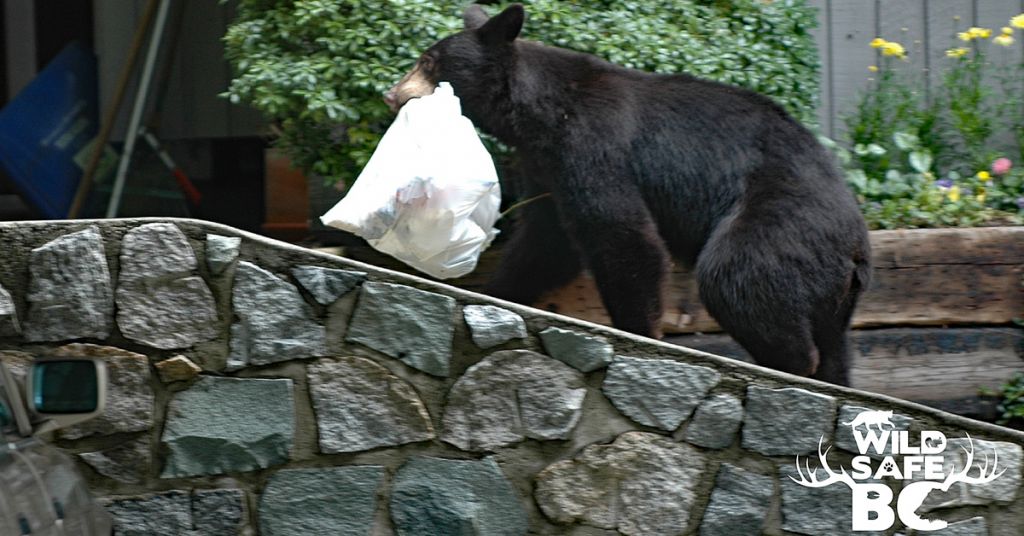
Garbage argument: This is a people problem, not a bear problem. Humans just aren’t very good at trash. Photo: WildSafe BC
It’s unclear if wildfires or heat-induced failures of food sources such as berries were to blame. But they likely played a significant role, says Vanessa Isnardy, the provincial coordinator for WildSafe.
“Very often, when natural food availability decreases, that can lead to increased conflicts with bears and other wildlife as bears seek out food in human-dominated areas,” says Insardy.
Data from the British Columbia Conservation Officer Service (COS) indicate 2021 is on pace to be a record year for bear-human conflict.
“We’re always trying to play catch-up when trying to determine what’s driving up these conflict numbers,” says Mike Badry, wildlife conflict manager for COS.
When his agency gets a call about a problem bear, officers assess if the animal is habituated to human food and wary of people. Though the agency does try non-lethal tactics such as hazing (attempts to scare bears away) and, more rarely, physically relocating bears, it relies heavily on killing the animals.
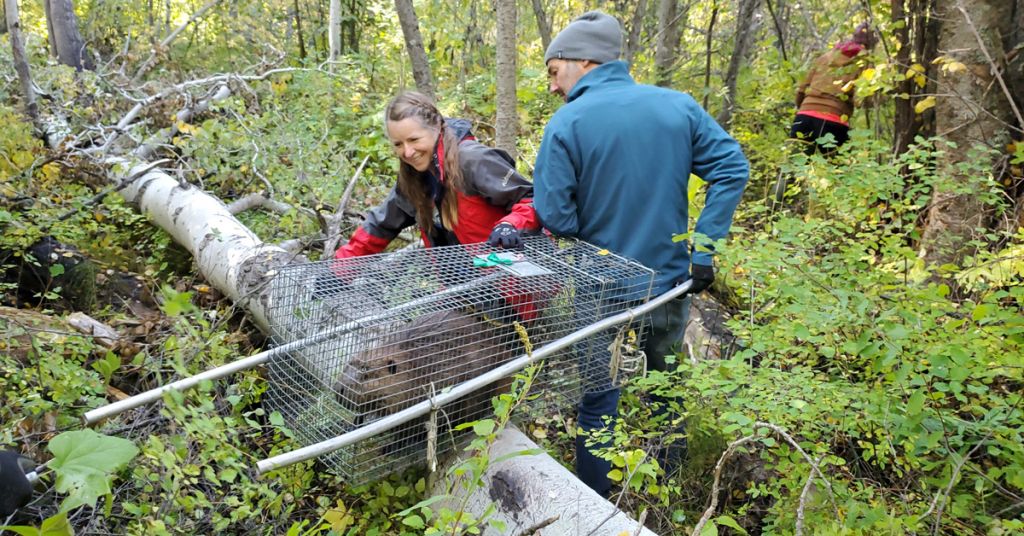
Moving example: Washington’s Methow Valley is a textbook example of the growth of WUI. The valley’s population grew 31% between 2005 and 2020. Established in 2008, the Methow Beaver Project helps relocate beavers in irreconcilable conflict with landowner priorities. In past years, killing beavers was a common resident response. Photo: Methow Beaver Project
This year, conservation officers killed 369 black bears in the province—not a record, but well above average.
“These decisions are taken with a great degree of thought and it’s not something [conservation officers] take lightly,” says Badry. “The real problem is we have way too high a number of bears going down this road of habituation and food conditioning.”
He blames human behaviors for the rise, including improper storage of garbage or the failure to fence fruit trees and beehives.
“If you’re seeing a spike in bears suddenly showing up in town, that’s a pretty strong indication that something is going on ecologically,” says Kyle Artelle, an adjunct professor of biologist at the University of Victoria. “Because bears tend to want to avoid us. We are a very high risk, and they know that.”
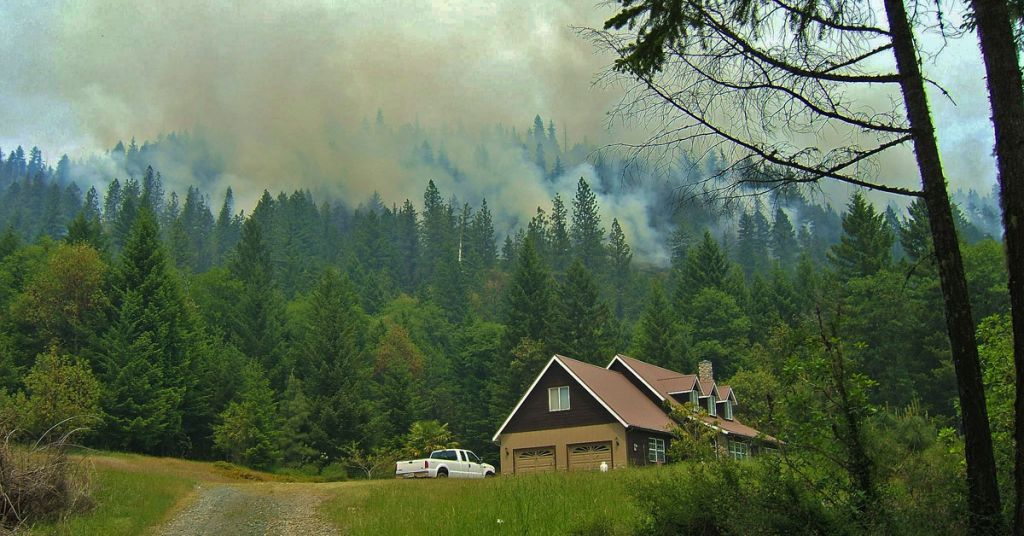
Management issue: Prescribed burns, such as this one in Oregon, are increasingly inhibited by proximity to houses. Photo: BLM
Artelle’s research in British Columbia indicates conflicts between bears and humans increase when food sources such as berries and salmon become less available.
But a major driver is what he says is “a people problem.” If there are no attractants in places where humans are, bears will move on.
“They don’t want to be here, but they’re desperate,” says Artelle, adding that when natural food sources return, most bears will seek those out rather than return to backyards.
[perfectpullquote align=”full” bordertop=”false” cite=”” link=”” color=”” class=”” size=””]”To think you’re never going to have any type of incident is ridiculous when you have people at unprecedented levels visiting these remote areas.” —Brook Fahy[/perfectpullquote]
WildSafe BC is an organization dedicated to educating residents in urban-wildland interface about proper bear-safe practices. Isnardy, the provincial coordinator, observes that many people don’t know that fruit trees, beehives and chicken coops should be protected with electric fencing to prevent bears and cougars from seeking food there.
Valley bottoms are where bears seek food, which also tends to be where people live.
“A bear is often like, ‘Oh there’s some bird seed, that’s a lot of calories!” Isnardy says. Her organization works to convince residents that feeders are a bad idea in bear country, when 2.2 pounds of seed contains 8,000 calories.
The organization spends a lot of time educating residents.
“Coexisting with wildlife … is what we’re really trying to do,” she says.
Saving deer, one mile at a time
In Okanogan County, Wash., Jason Kehne leads the local chapter of the Mule Deer Foundation. He says everyone who lives in the area has a story about hitting a deer.
One in particular sticks with him. Several years ago, a long-haul truck driver hit a deer. The animal went through the windshield and into the cab. Still alive, it kicked the man and caused severe injuries to his face and one eye that required surgery.
Later, the man spoke before the state legislature in response to criticisms that the cost of fixing roads could top $1 million per mile. Kehne remembers the man told the committee: “I think a human life is worth more than a million dollars, don’t you?”

Two rivers run through it: In Oregon, an industrial center sits near the confluence of the Sandy and Columbia Rivers. Popular with dog walkers, a nearby parcel of wetland has been preserved. Fed-Ex (left) and Amazon (right) operate two of the area’s larger business operations. Photo: NASHCO
Kehne, who also works for the nonprofit Conservation Northwest, is behind Safe Passage Highway 97, a project working to install wildlife underpasses, fences and other deterrent measures on 12 miles of highway between Tonasket and Riverside in order to reduce collisions with mule deer.
After raising $260,000 in private donations from hunter and angler groups and environmental nonprofits, Conservation Northwest and the Mule Deer Foundation worked with the Washington State Department of Transportation to use an existing road bridge as an underpass for deer and improve one mile of the highway.
“We decided to get a mile of the road done to show people how it works,” says Kehne. “I don’t know how many people have told me that on that one mile, they breathe a little easier.”
The coalition is now pushing the state legislature for $18 million to fix the road to allow safe passage for deer and other wildlife. It’s a diverse group that includes hunters and anglers, the Colville Confederated Tribes, truckers, Latino organizations and Democratic and Republican lawmakers.
Though the project was included in this year’s state transportation plan, funding hasn’t yet been approved.
“Our highway system was put in when this wasn’t a concern,” says Kehne. “We didn’t think about culvert sizes for fish. We didn’t think about cutting off connectivity for wildlife species. So it’s not an easy concept to bring to a community, whether it’s rural or urban.”
Governments dodging responsibility
Ultimately, the fate of wildland-urban interface rests with the people who live in these critical areas, and those who continue to pour into them.
Many residents of wildland communities are resistant to regulation—that’s why the more successful initiatives tend to involve education and one-on-one interaction.
Once a landowner understands that, say, trapping “problem” beavers in Washington’s Methow Valley may only lead to another colony of the animals returning in six months, they’re often more open to a new approach. Established in 2008, the Methow Beaver Project is focused on helping residents of the Methow coexist with beavers.
But the biggest source of problems, and potential solutions, lies with local governments.
UW’s David Peterson notes that a persistent WUI issue is lack of accountability and competing interests between different levels of government.
At the local level, towns and counties are motivated to encourage WUI development, since they directly benefit from more jobs and increased tax revenue.
But it’s state and federal land managers that end up dealing with the repercussions of that growth, whether it’s dwindling numbers of salmon streams or increasing frequency of wildfires.

Development issues: New construction on the edge of Oregon’s Mt. Hood National Forest. Photo: NASHCO
Peterson says local governments around the Columbia River Basin often dodge responsibility.
“They’re privatizing the benefits and socializing the cost,” he says. “That’s the crux of the problem. These counties aren’t going to put the fires out—that’s up to (state and federal) agencies, who pay for it. So there’s no direct connection between local planning and development and the risks incurred by that development.”
For now, federal, state and some local agencies, as well as nonprofits, are picking up the slack and pushing residents of WUI to do what’s needed to live responsibly in wild environments.
If residents and local governments push back on these efforts, it only postpones confronting an ever-expanding emergency, and will likely make the solutions even more costly and complex.



